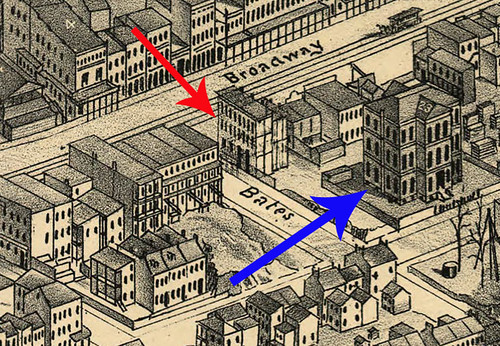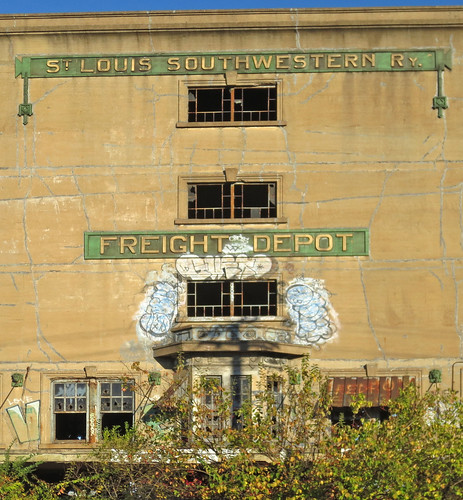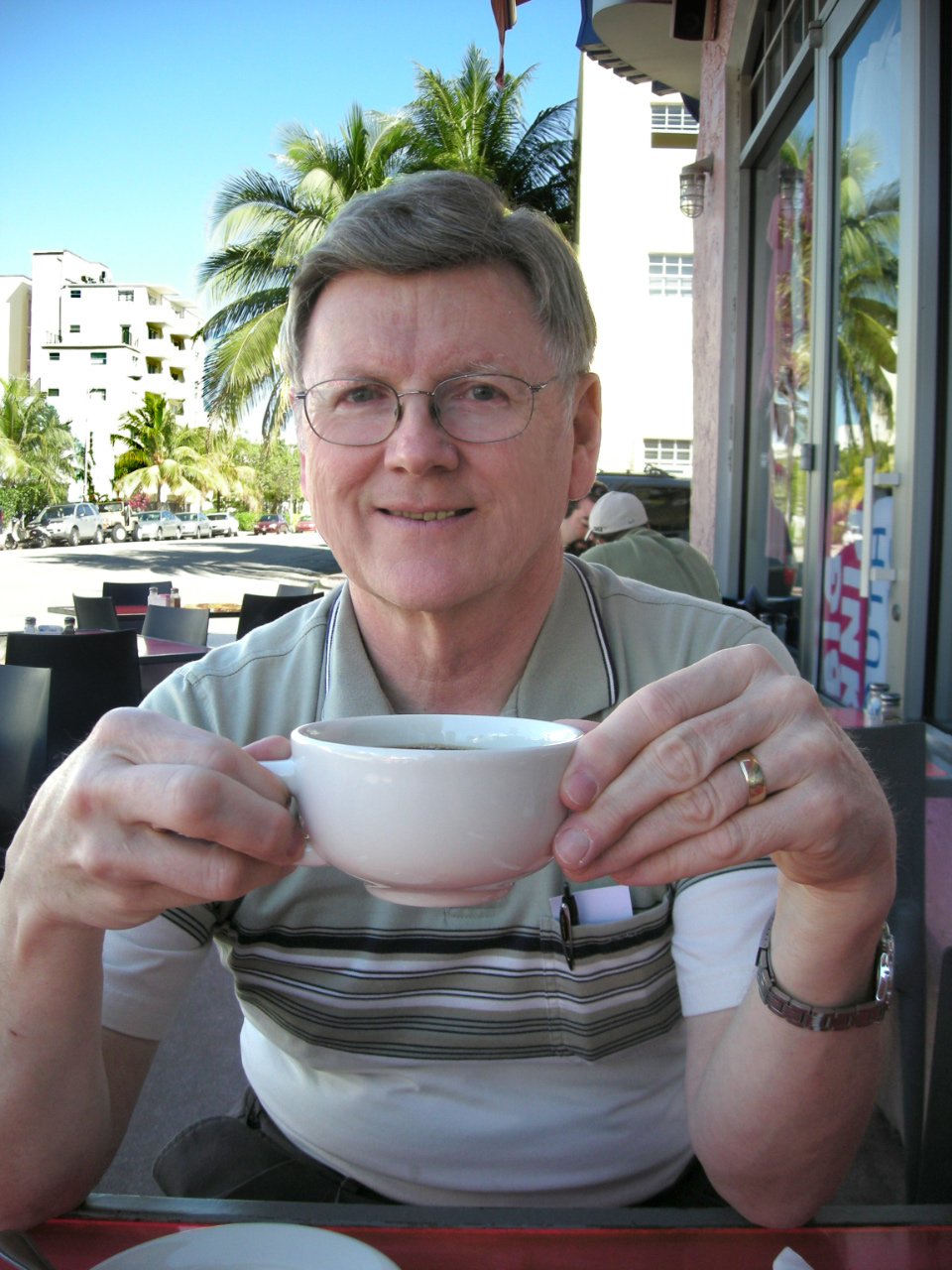The area of my interest is near the corner of Broadway and Bates. (Bates was renamed Dickson many years ago.)
There is a lot of history associated with this area. This is a picture from the National Park Service showing the area along the riverfront cleared in 1942 to build the Gateway Arch. (The arch was not completed until 1965 - but that's another story.) The arrow points to Broadway and Bates.

Here is the scene as depicted on Compton and Dry's plate 19.

The three-story building indicated by the red arrow was the Hotel Noble back in 1875. Only the first floor remains today. Across Broadway from the Noble was Joseph Murphy's Wagon Factory where, reportedly, 200,000 "Murphy Wagons" were built to supply the Santa Fe Trail trade. Across Bates from the Noble, Joseph Boyer built his small machine shop.
It was in Boyer's shop that two significant inventions were nurtured to life. Boyer invented the pneumatic hammer which would drive countless rivets in the early twentieth century and in a small second-floor room, William S. Burroughs created the first practical printing adding machine. When Burroughs stopped by the Boyer shop about 1883 and asked if he could hire a room and a man for his project, Boyer didn't have a man available - but he did have a talented boy - Al Doughty, who had attended the Bates elementary school across the street (blue arrow.) Doughty would retire from the presidency of Burroughs Adding Machine Company some 60+ years later.
Most of the buildings in this neighborhood disappeared about 1895 as the railroads built freight terminal facilities in the area. A part of the block to the south became The Wedge automotive service station. That enterprise was held up in 1950 by Sonny Liston who subsequently was imprisoned for the armed robbery and there learned the useful art of boxing.
The Hotel Noble serves only as a landmark in this story, but I took a picture to anchor us to Plate 19. And Linda got a nice picture of one of the railway freight terminals from 1895. As she says, "We certainly visit some unusual parts of cities because of your research."







No comments:
Post a Comment